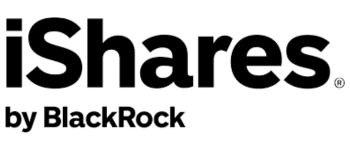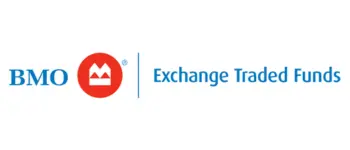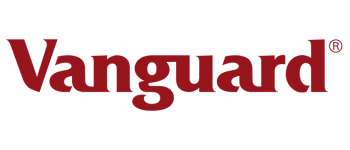Let’s Explore These Standout Canadian Bond ETFs
Key takeaways
Diversified Fixed-Income Exposure – These ETFs provide access to government, corporate, and hybrid bonds across different maturities.
Interest Rate Sensitivity – Short-term bond ETFs are less affected by interest rate hikes, while aggregate bond ETFs may be more volatile.
Yield vs. Stability – Corporate and hybrid bond ETFs offer higher yields, while government-heavy ETFs provide more safety.
One ETF I like way better than the ones on this list.Many new investors often skip adding bonds to their portfolios, using risky ideas to defend their choices.
Even with the ability to purchase a bond ETF and thus broad exposure in a single click, they don’t. Their thinking goes something like this.
“If stocks outperform bonds over the long term, then why wouldn’t I have a portfolio full of stocks instead?”
After all, isn’t the whole point of investing to end up with the most amount of money? Yes, but there are a few things wrong with this line of thinking.
As Warren Buffett likes to say, the first rule of investing is to not lose money. An excellent way to lose a lot of money is to aggressively buy stocks no matter what underlying economic fundamentals say.
Even “safer” investments, such as blue-chip dividend stocks, are volatile. Some investors can’t handle the volatility of an all-stock portfolio, and they’ll inevitably sell at the worst time.
This is why Canadian bond ETFs are perfect for retirees
Mixing bonds into the portfolio is especially important as you approach retirement. The last thing you want is for your portfolio of 100% equities to implode 40% right before you hang up the proverbial skates.
Although the diversification of your portfolio via bonds will undoubtedly impact the potential of capital gains, it will provide you with some downside protection if the stock market crashes.
Many ignore asset allocation until it’s too late, harming a portfolio. As you get older and approach retirement, most investors will look to reduce their risk tolerance. And to do this, many of them head to the bond market. And with the addition of these bond funds, it’s effortless to buy bonds these days.
A few decades ago, a regular investor couldn’t build a diversified bond portfolio. They were forced to buy individual bonds at their local brokerage, which cost a lot in commissions and was generally inefficient.
Compare that to today with the emergence of Canadian ETFs, where anyone with an online brokerage account and a mouse can buy diverse bond ETFs that hold hundreds of different kinds of bonds for a small ongoing fee. We’ve quickly reached the point where there’s almost too much choice in the bond ETF market.
That is exactly why I’ve created this article. I will help you cut through the noise and provide you with seven of the best Canadian bond ETFs to add to your portfolio today.
So what are the best Canadian bond ETFs to buy today?
- iShares Core Canadian Short-Term Bond Index ETF (TSE:XSB)
- iShares Canadian Hybrid Corporate Bond ETF (TSX:XHB)
- iShares Core Canadian Universe Bond Index ETF (TSX:XBB)
- BMO Aggregate Bond Index ETF (TSX:ZAG)
- Vanguard Canadian Short Term Corporate Bond Index ETF (TSE:VSC)
- BMO Short Corporate Bond Index Series Units ETF (TSE:ZCS)
- BMO Mid Corporate Bond Index Series Units ETF (TSE: ZCM)
- BMO Long Corporate Bond Index Series Units ETF (TSE: ZLC)
Conservative short-term bond exposure
iShares Core Canadian Short-Term Bond Index ETF (TSE:XSB)

This ETF tracks an index of high-quality Canadian short-term bonds, primarily government and investment-grade corporate debt. It provides a low-risk option for investors seeking stability and liquidity.
Higher-yield corporate hybrid bonds
iShares Canadian Hybrid Corporate Bond ETF (TSX:XHB)

XHB provides exposure to a mix of corporate bonds, including hybrid securities with both equity and fixed-income characteristics. It’s designed for investors seeking higher yields without taking on full equity risk.
Broad Canadian bond market exposure
iShares Core Canadian Universe Bond Index ETF (TSX:XBB)

XBB tracks the overall Canadian bond market, including government and corporate debt across all maturities. It’s a core fixed-income holding for balanced portfolios.
Low-cost broad bond exposure
BMO Aggregate Bond Index ETF (TSX:ZAG)

ZAG provides exposure to a diversified mix of Canadian government and corporate bonds, similar to XBB but with a focus on cost efficiency. It’s a great option for cost-conscious fixed-income investors.
Corporate-focused short-term bonds
Vanguard Canadian Short Term Corporate Bond Index ETF (TSE:VSC)

VSC focuses on short-term, investment-grade Canadian corporate bonds. It offers a balance of stability and higher yields compared to government bond ETFs.
Stability with low interest rate sensitivity
BMO Short Corporate Bond Index ETF (TSE: ZCS)

ZCS provides exposure to short-term, investment-grade corporate bonds in Canada. With a lower duration, it minimizes interest rate risk while offering a modest yield. It’s ideal for investors prioritizing capital preservation and steady income.
Balanced yield and interest rate risk
BMO Mid Corporate Bond Index ETF (TSE: ZCM)

ZCM holds mid-term corporate bonds, striking a balance between income and rate sensitivity. It provides a higher yield than short-term bonds while keeping volatility lower than long-term options.
Higher yield with rate sensitivity
BMO Long Corporate Bond Index ETF (TSE: ZLC)

ZLC focuses on long-term corporate bonds, offering the highest yields among the three ETFs. However, it also has the most exposure to interest rate fluctuations, making it ideal for investors who expect rates to decline.
Canadian bond ETFs and the impact of rising rates and inflation
We always hear that bonds have an inverse relationship with interest rates, which is true. As rates rise, bond prices tend to fall.
This is because as new bonds are issued in a higher rate environment, they will have a higher coupon rate, as companies need to issue bonds at competitive prices. So their prices must drop for the previous bonds to stay competitive and yield the same.
So, many will look to avoid bonds during periods of high inflation. This is because not only do real returns shrink with bonds during high inflationary environments (especially with long-term bonds compared to short-term bonds), but it is common practice for policymakers to raise rates during high inflation to cool the economy, like we witnessed in 2022.
However, rates are now coming down, and bonds should go up in price as interest rates fall. Again, the price of a bond has an inverse relationship to interest rates. As rates go down, newly issued bonds at that time will have lower coupon rates, and be less attractive than bonds issued right now.
So, you could make a strong case for adding bonds to a portfolio right now, and many are.
What is the downside of bond ETF?
The downside of a bond ETF versus simply buying individual bonds is that the portfolio is constantly rolling through many bonds that may have been issued at a lower interest rate. A prime example is that you can often find new bonds in this environment yielding 5%+, while most of the funds on this list yield in the 3% range.
Why? Well, they have many bonds purchased in a lower-rate environment and have yet to come to maturity. When they do, new bonds at higher rates will replace them and boost yields. It just takes a little longer than buying a single bond.
There is also the idea that when you purchase an individual bond, at least one that is high quality, you will get your initial capital back upon maturity.
Although it is happening underneath the surface inside of the fund, when you have thousands of bonds inside of the fund, you don’t really see the impacts of it on the price of the unit, which can lead to lingering losses if bond prices continue to fall.
Will bonds and bond ETFs provide strong returns?
Nowadays, we must think of bonds not as an asset that will provide strong real returns (real meaning after inflation) but as somewhat of a safety net. However, depending on the situation with interest rates, they could certainly drive strong returns moving forward.
Past performance of bonds, especially when we look at timelines before the financial crisis in 2008, are likely never to be repeated, though. Countries are now forced to run on ultra-low interest rate environments, and we are unlikely ever to see large coupons or high-quality, high-yielding bonds again.
There is also the issue that income taxes are not friendly to bonds. Unlike capital gains on a stock or dividends from a Canadian corporation, a bond has no tax benefits. It is taxed at 100% of your nominal tax rate.
However, this doesn’t mean you shouldn’t own high-quality, investment-grade bonds inside a portfolio to take advantage of the current environment. You may just want to consider tax-sheltering them.
Which Canadian Bond ETF is right for you?
Ultimately, it comes down to whether you want income or stability.
If you’re interested in maximizing the income collected from the boring part of your portfolio, choose the iShares Canadian Hybrid Bond ETF.
Just remember that this fund has the chance to perform poorly if there were to be more volatility in the markets. During high volatility, investors tend to gravitate towards government bonds, not corporate ones.
If stability is your chief concern, the iShares Canadian Bond Universe ETF or the BMO Canadian Aggregate Bond ETF are good choices. ZAG is my favorite because it offers a slightly higher yield, but I wouldn’t fault an incredibly nervous investor for choosing XBB and its somewhat better safety instead.
And, if you’re looking for bonds that will be the least exposed to rising rates and inflation, the short-term bond index is a solid option.
No matter what Canadian bond ETF you choose, the real benefit of owning these comes when the next recession hits. Drawdowns are much smaller than equities, and that’s the kind of stability we’re looking for.
